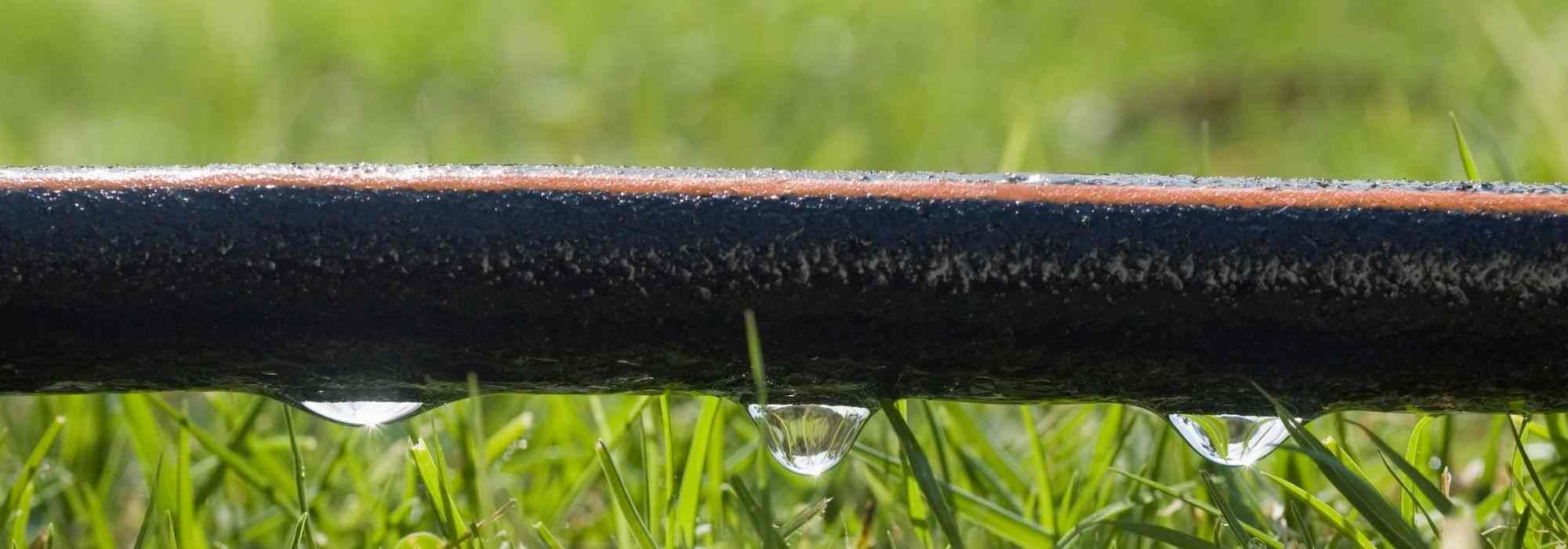
Watering with a porous hose
All our tips
Contents
Watering with a porous hose offers numerous advantages. Firstly, it optimises the irrigation of your garden. Indeed, this perforated hose is a simple, practical, and easy-to-install system. Positioned close to the base of the plants, watering is very targeted. Water seeps slowly, drop by drop, through the pores of the hose, promoting good soil saturation and consistent moisture. The plants therefore absorb water optimally and regularly, being served directly. No more water wastage and soil leaching. Irrigation with a porous hose also allows for time savings by avoiding trips back and forth with a heavy watering can. Finally, its price is generally affordable. Discover our tips for watering your ornamental garden or vegetable patch in an ecological and economical way.
Un tuyau microporeux est un type de tuyau utilisé pour l'irrigation qui permet une distribution lente et uniforme de l'eau à travers de petits pores. Ce système est particulièrement efficace pour arroser les plantes, car il minimise l'évaporation et le ruissellement, tout en assurant que l'eau pénètre profondément dans le sol. Les tuyaux microporeux sont souvent fabriqués à partir de matériaux poreux qui permettent à l'eau de s'infiltrer lentement, ce qui favorise une meilleure absorption par les racines des plantes.
A microporous hose is made of porous rubber. Finely perforated along its entire length, it allows water to drip gently through its micropores. Watering with this type of hose involves efficiently irrigating a planting area in one go, at very low pressure, directly at the base of the plants. This hose has the advantage of not wetting the foliage and thus reducing the risk of fungal diseases (fungi) that often occur on certain sensitive plants like tomatoes, squashes, or roses, due to overhead watering. This irrigation solution also helps to limit water waste: it penetrates slowly into the soil, giving the plants time to absorb it, and therefore there is no leaching of the soil. Moreover, the soil remains loose, is not compacted due to the fine seepage of the hose, and no crust forms on the surface (a hard, impermeable crust that increases runoff). However, the porous hose has a few minor drawbacks. Firstly, being thin to allow water to seep out, it is less durable than a standard watering hose. Additionally, the distribution of water is less uniform along its length; generally, more water flows out at the beginning of the hose than at the end.
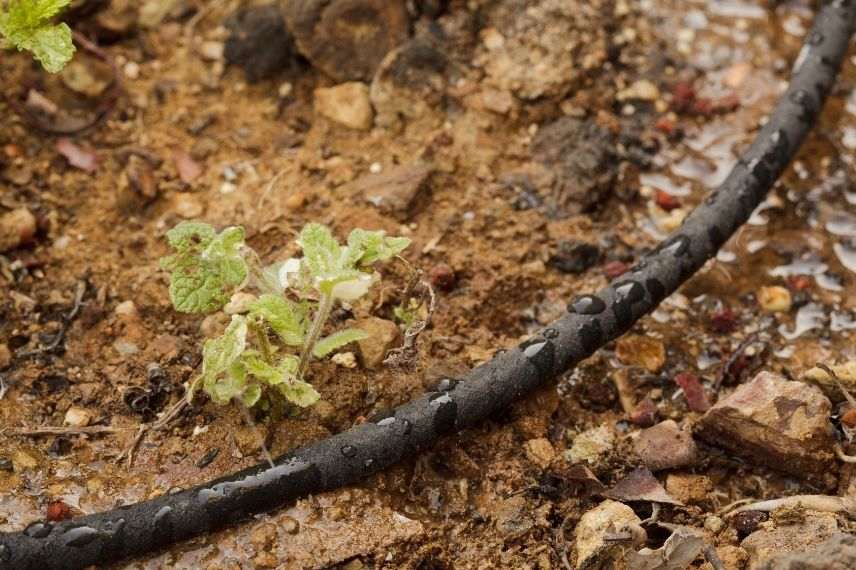 Watering at the base of the plants
Watering at the base of the plants
How to choose your porous hose?
Microporous pipes are reasonably priced, ranging from 10 to 60 Euros depending on the kits and accessories included or not (tap connectors, various fittings). Lengths can vary from 10 to 200 metres. Very long pipes need to be cut into several sections. When coupled together and aligned side by side between the ranks of vegetables in a vegetable garden, for example, they form a circuit supplied by a single water source. This allows for simultaneous watering of multiple plants. Depending on the size of the garden, the pipe can be adjusted to the desired length by cutting or extending it. Note that manufacturers recommend maximum lengths to be adhered to. The most commonly offered pipe diameter is 12 mm (internal), or 16 mm in external diameter. Before your purchase, roughly determine the distance to be watered. The pipe should be longer than your measurement. Additionally, the flow rate, usually specified on the packaging of each model, ranges from 1 to 10 litres of water per metre of pipe per hour.
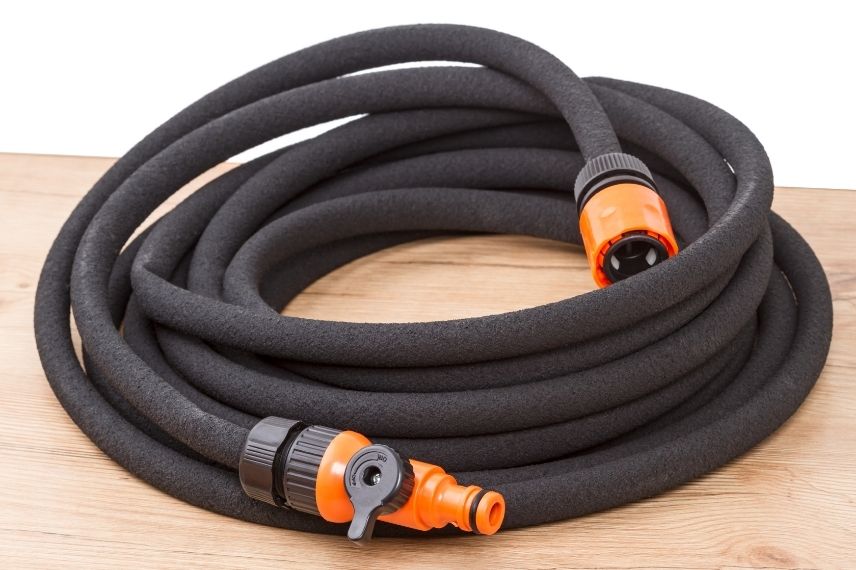
Microporous pipe with fittings
Installing and using a porous hose
Where and when to install it?
This system is ideal for irrigating young bush hedges, flower beds, borders, narrow plantings, and for sowing in lines in the vegetable garden. It can remain in the same place from spring to summer or can be moved from one location to another over time, as you wish, to water other plantings. The hose should be installed after planting or sowing, before the plants become too large.
How to connect it?
If your water supply is far from your planting, your microporous hose must be connected to a standard garden hose which, in turn, is connected to your tap. It can also be connected directly to the water supply if it is located next to the area to be watered. A tank used for rainwater collection can also supply the hose, provided that the tank is elevated compared to the planting to be watered.
The fittings that attach to the ends of the hose are often included in kits to facilitate installation, such as the flow control fitting that allows you to manage and adjust the water flow. Optionally, various shaped fittings (elbow, T, or Y) provide the possibility to create a linear watering network.
By adding a timer, you can schedule automatic irrigation for your garden at the most favourable times or in case of absence.
How to lay it out?
Thanks to its flexibility, it is easy to set up the microporous hose. Once connected to the water supply or standard garden hose, unroll your hose and place it in a straight line at the base of closely planted vegetation or along the sowings. For more spaced plants or staggered plantings, make it zigzag between the crops. Ensure that the fitting serving as a cap at the end is securely attached.
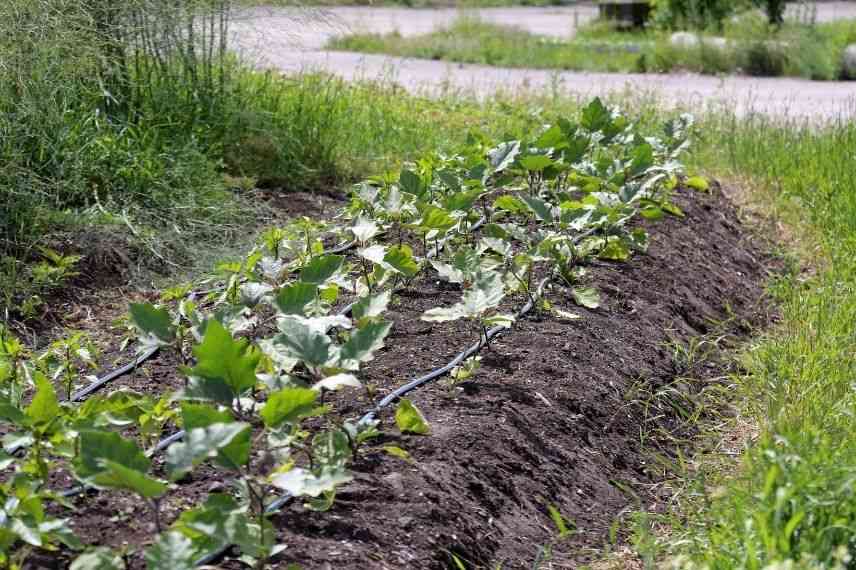
Arrangement of inline watering hoses (photo NRCS Massachusetts – Flickr)
How to water with a microporous hose?
Very gently, open the water supply tap just a little. Operating at low pressure (from 0.5 to 1 bar), the tap should not be fully unscrewed, as this could damage the porous hose. If water is expelled in small jets, this means the pressure is too high and the tap needs to be adjusted. Water should diffuse in the form of droplets along the entire length of the hose. Conduct a test to check the amount of water delivered to the plants over a specific time by placing a large container between two plants and under the hose, then opening the valve. You can then observe the water flow and optimise the setting.
When and how long to water?
Morning and evening are the best times of day to start watering. As for the duration, 15 minutes is sufficient. Of course, this time should be adjusted according to the weather. In case of severe drought or heatwave, watering should be extended. To reduce evaporation, mulching is effective and does not hinder the operation of the microporous hose.
Can a microporous hose be buried?
Depending on the brand, some hoses can be buried in a shallow trench (a few centimetres) and covered with a layer of uncompacted soil. If this information is not specified on the packaging or in the user manual, we advise against burying it. Indeed, contact with the soil may clog the micro-perforations. However, it is perfectly possible to conceal it under a mulch, such as flax mulch.
Read also
How to manage watering in a greenhouse?How to properly clean and maintain a porous pipe?
Micro-perforations can become blocked with limescale from tap water or with small particles found in rainwater. Clean the hose twice a year: during its use mid-season and before storing it for winter. To do this, soak it in a mixture of water (5 litres) and white vinegar (1 litre) for about ten hours. Once the limescale is dissolved, rinse the hose thoroughly, empty it well, and let it dry before coiling it up for storage. Ideally, store it flat.
Tip: If your hose is connected to a rainwater tank, place a nylon stocking at the start of the circuit; it will act as a filter.
- Subscribe!
- Contents
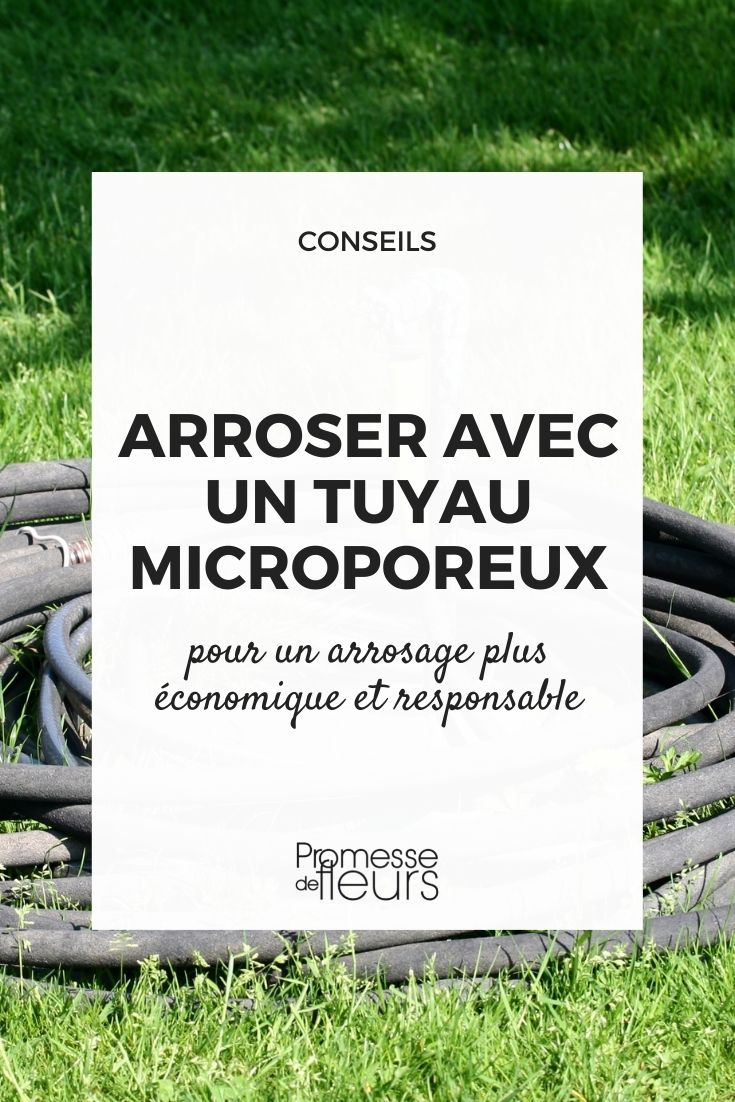































Comments